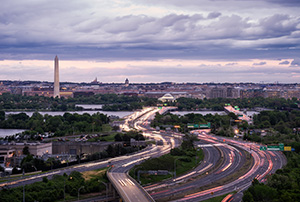Menu
DEI Initiatives in the Crosshairs of the Administration: What Nonprofits Need to Know to Mitigate Their Risk
by Jeffrey S. Tenenbaum, Esq. and Kevin Serafino, Esq.
Tenenbaum Law Group PLLC
February 7, 2025
Shortly following his inauguration in January, President Trump signed a flurry of Executive Orders (“EOs”) implementing a wide array of administration policies. One of the EOs issued January 21, entitled “Ending Illegal Discrimination and Restoring Merit-Based Opportunity” (the “DEI EO”), is designed to ban both public- and private-sector programs encouraging diversity, equity, and inclusion (“DEI”). Another, entitled “Ending Radical and Wasteful Government DEI Programs and Preferencing, (the “EJ EO”), terminates environmental justice programs within the Executive Branch and targets federal contractors and grant recipients that advance DEI and environmental justice by instructing each federal agency to “[t]erminate, to the maximum extent allowed by law, all … ‘equity-related’ grants or contracts…”
Shortly following her confirmation by the U.S. Senate, on February 5, Attorney General Pam Bondi issued a pair of memoranda to U.S. Department of Justice (“DOJ”) personnel, directing the Department to eliminate internal practices related to DEI and environmental justice and directing various elements of the DOJ to “investigate, eliminate, and penalize” private companies and universities (including nonprofits) that have “illegal” DEI programs. She instructed DOJ officials to enforce federal civil rights laws to abandon what she called “illegal discrimination and preferences,” outlining strategies such as launching criminal and civil investigations. These directives were issued to implement the President’s earlier EOs.
While the concepts of these EOs and DOJ enforcement memoranda were not surprising, given widespread criticism of DEI and other programs considered “woke” by the political right, the text of the directives surprised many with their explicit mentions of private sector and nonprofit organizations, many of which have long-established programs dedicated to DEI efforts. Some others are organized with DEI as a central tenet or purpose. The new directives have raised many concerns among nonprofit executives about the legality of both legacy and emerging DEI efforts and the status of their organizations’ funding secured through federal grants, cooperative agreements, contracts, and loans.
At a minimum, these directives signal the administration’s intent to pressure private-sector organizations regarding their DEI practices. A more expansive view of them foreshadows an aggressive effort to challenge DEI programs through lawsuits and regulations targeting organizations perceived as ideological and political enemies of the current administration and its policies.
Of immediate concern to many nonprofit federal grant, cooperative agreement, and contract recipients are the requirements in the DEI EO for such recipients to affirmatively certify that their organization (i) “does not operate any programs promoting DEI that violate any applicable federal anti-discrimination laws,” and (ii) is in compliance with all federal anti-discrimination laws that are “material to the government’s payment decisions for purposes of” establishing federal False Claims Act liability (which carries with it both potential civil and criminal penalties).
Executive Orders carry the force of law. They are legally binding and can be enforced, both within the Executive Branch and against other entities. Executive Orders traditionally carry out existing powers of the President and implement existing law, rather than creating new law, and often dictate how the Executive Branch will operate by directing departments and agencies to carry out certain initiatives. Given the Executive Branch’s vast bureaucracy and spending, Executive Orders have traditionally been a powerful policymaking tool for Presidents to test or implement new economic and social policy. Executive Orders are subject to judicial review by federal courts and can be revoked by the sitting President (including successors).
DEI Executive Order
The January 21 DEI EO’s stated purpose is to end “pernicious discrimination.” It directs federal departments and agencies to terminate “all discriminatory and illegal” DEI programs and practices and declares that DEI programs and practices are “discriminatory and illegal." Both the EOs and the DOJ directives contain cursory citations to the federal Civil Rights Act of 1964 and the U.S. Supreme Court’s 2023 decision in Students for Fair Admissions, Inc. v. President and Fellows of Harvard College as supporting the conclusion that DEI programs, broadly speaking, are illegal.
Notably, the DEI EO and the DOJ directives also took aim at DEI efforts in the private sector, attempting to extend its reach beyond the typical province of Executive Orders of federal agencies and federal award recipients. The EO directed agency heads to “take all appropriate action” to “advance . . . the policy of individual initiative, excellence, and hard work . . .” The order directs federal agencies to submit recommendations for enforcement of civil rights laws, including by identifying “discriminatory DEI practitioners” and by recommending investigations and potential litigation related of DEI programs of “publicly traded corporations, large nonprofit corporations or associations, foundations with assets of 500 million dollars or more, State and local bar and medical associations, and institutions of higher education with endowments over 1 billion dollars.” The explicit reference to nonprofit organizations and associations has generated concern among nonprofit and association executives, and a rush to evaluate whether any DEI practices could be considered “discriminatory.” One of the DOJ directives similarly directed DOJ’s Civil Rights Division to recommend enforcement actions and “other appropriate measures to encourage the private sector to end illegal discrimination and preferences.” Among the recommendations the Attorney General requested are “proposals for criminal investigations and for up to nine potential civil compliance investigations.”
Environmental Justice Executive Order
Like the DEI EO, the EJ EO directs federal agencies to terminate federally funded DEI programs and initiatives - including through nonprofits that receive federal grants or contracts - and extends the culling to include agency efforts to promote environmental justice. The intent of the EJ EO seems to be to claw back parts of the Biden administration’s environmental regulations, as well as portions of the federal Infrastructure Investment and Jobs Act and the Inflation Reduction Act that provided funding for environmental justice programs.
Although there is some clear overlap in the subject matter of the EJ EO and the DEI EO, the EJ EO goes further than the DEI EO by targeting federal contractors and grant recipients. It directs agencies to provide the White House Office of Management and Budget (“OMB”) with a list of federal contractors who have provided DEI training to federal agencies, as well as federal grantees and contractors who receive federal funding for "equity-related" programs. Although the EO does not direct that litigation or enforcement actions be taken against these grantees or contractors, the intent of EO seems clear – to achieve compliance with its goals by the mere threat of including these organizations on an administration list of supposed transgressors.
OMB took the extreme step of “pausing” all federal grants, cooperative agreements, and loans, putting mission-driven nonprofits in critical areas, including public health, environmental protection, immigration, international development, and others, at risk of losing funding that they rely on to carry out their missions. While the administration reversed its “pause” shortly after its issuance, and multiple federal courts have since enjoined the action, the EOs remain in full force and effect.
Practical Considerations
Unfortunately, the DEI EO and the EJ EO do little to elaborate on what they view as “discriminatory” and “illegal.” Additionally, the EJ EO and DOJ directives somewhat obscure the consequences of being on an administration “list” of organizations providing DEI training or programming for the federal government, although the clear implication is the loss of federal funds. While both EOs and the DOJ directives make oblique references to statutes and court decisions, they do not examine them in depth, nor do they indicate which elements of a DEI program would make it discriminatory or illegal, adding to the ambiguity of the legal risk and the anxiety of nonprofit leaders. For instance, staff at the National Science Foundation (“NSF”) have reportedly been combing through thousands of active science research projects, alongside a list of flagged keywords (such as “women,” “diversity,” “minority,” “institutional,” “historically,” and “socioeconomic,” among dozens of others), to determine if they include activities that violate the new EOs. Scientists who receive NSF funding were already put on notice to cease any activities that do not comply with the EOs. Nonprofit executives who have concerns about the legality of DEI programs should consult experienced legal counsel to further examine their legal risk and discuss potential mitigation strategies.
Even in this time of uncertainty, there are several steps nonprofit executives can take to understand their legal risk related to DEI initiatives. These steps all require a degree of self-awareness of an organization’s values and culture, but also a careful examination of organizational finances, legal risk, risk tolerance, and public profile.
Know your values. Some nonprofits are organized for the specific purpose of supporting certain racial, ethnic, religious, gender, or other groups in a way that may be considered “DEI” by the Trump administration. For these organizations, there may be a direct conflict between their organizational purposes and the dictates of the EOs and DOJ directives. Don’t be too quick to abandon a central tenet of your organization without careful consideration but examine whether certain less-drastic steps can be taken to mitigate risk. For instance, many nonprofits are scrubbing their public-facing websites to remove any DEI-related references.
Examine your funding streams. Organizations that do not rely on federal awards for their operations are much more insulated from these EOs and potential DOJ enforcement than ones that do. If you do receive federal funds, and you have a constellation of subsidiaries and affiliates, identify which entity(ies) house(s) the federally funded programs and the DEI or environmental justice programs that put you at risk under the EOs, and do what you can to insulate the other entity(ies) accordingly. Also, begin examining funding alternatives, such as private foundation grants, that may allow you to fulfill your mission and meet your funding needs.
Scrutinize your DEI initiatives. Take a hard look at your DEI-related initiatives to ensure that they are consistent with current law and consult experienced legal counsel for assistance. The federal Civil Rights Act of 1964, mentioned in the DEI EO, is only one of the laws implicated by such programs; others could include Section 1981 of the federal Civil Rights Act of 1866 (which bans discrimination in contracting on the basis of race and has been used to launch legal attacks on nonprofit and other programs that restrict eligibility for certain fellowships, scholarships, grants, and other opportunities to certain races), state public accommodations laws, and other state education and employment laws. In addition, several states have passed anti-DEI laws covering employment, state grants, and education that need to be taken into account (such as the Florida law that prohibits private nonprofit and other employers from providing any DEI-related training to their Florida-based employees). See our prior article for a more expansive discussion of these issues.
Assess your culture and risk tolerance. Have a good understanding of the level of support for DEI-related initiatives within your nonprofit organization and among your members, donors, grantors, and other stakeholders. Understand your organization’s risk tolerance, budget, values, public profile, and ability to withstand legal challenges and the significant costs that often accompany them (some of which may not be covered by insurance). Be able to identify any potentially controversial programs as a way to anticipate legal and regulatory challenges and consider what interim changes can be made in order to mitigate risk and make your organization less of a target in the current climate.
Most of the administration’s directives in this area (and others) are already the subject of legal challenges in the courts – some of which have found early success – but the fate of that litigation, much of which is likely to work its way up to the U.S. Supreme Court, is uncertain. While many legal experts believe that a number of the new directives are unlawful, relying on such presumptions can carry with it a high degree of risk.
Although the new administration’s actions have instilled fear and uncertainty in many in the nonprofit community, these early actions may prove to be the catalysts that encourage nonprofits to take necessary protective actions. The Trump administration has showed its hand and given nonprofit organizations an early opportunity to galvanize themselves against potential adverse legal and regulatory consequences. By taking early prophylactic steps against these threats, nonprofits will be better positioned to defend themselves for the next four years while maintaining progress toward their missions.
For more information, please contact the authors at jtenenbaum@TenenbaumLegal.com and kserafino@TenenbaumLegal.com.




















